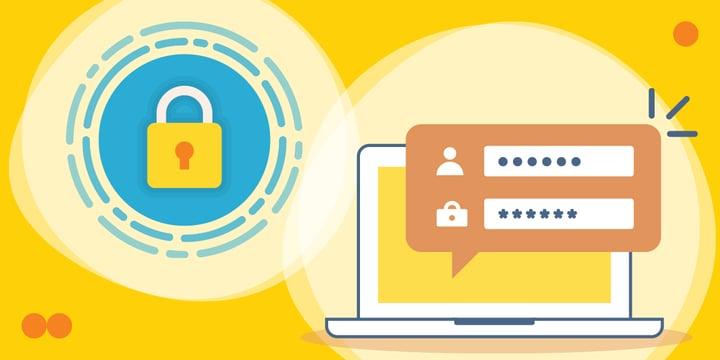How many passwords have you used today? If the answer is more than one, then you're still managing passwords rather than identities. If identity and access management (IAM) is a new concept for you, you're not alone. While it's an increasingly familiar topic among IT experts, IAM has not yet entered the vernacular of most nonprofit leaders.
Those of you who are familiar with the idea may think of IAM as something that's only appropriate for larger organizations. But in today's environment, that's no longer true. Okta is a trusted provider of identity solutions for organizations of any size and, through TechSoup, eligible organizations can receive 50 free licenses of all Workforce identity products. Here's what you need to know about using Okta at your nonprofit.

Identity Is the Core of Modern IT
In today's world, data is increasingly stored in the cloud by a growing number of vendors and accessed from a variety of devices that are connected to any number of networks. How do most organizations try to keep things secure? P@$$words. However, as cybercriminals have become savvier than ever, passwords alone are about as strong as the sticky notes they're written on. Identity and access management describes the tools and practices that help modern organizations ensure that only the right people have access to the right information at the right time.
Okta Gives You a Simple, Secure Technology Foundation
Okta can do a lot, but let's focus on the basics for now. Arguably, the most important components in your technology environment are the systems where your data lives and the people that access those systems. Systems and people. A good technology foundation, at a minimum, should enable you to simply and securely manage those two things.
Let's start with your people. Everyone in your environment should have a single identity so that you can manage licenses, track access to sensitive data, and generally stay sane. It sounds simple, but it's often not. Okta Universal Directory (UD) is the flexible, powerful, user-friendly "source of truth" that keeps track of each "identity" in your environment. You can create those identities from scratch in UD or sync them from another system like Active Directory or Google Workspace.
With all your people in one place, shouldn't all of their systems be in one place too? Okta Single Sign-On (SSO) puts every application your people need onto a single pane of glass. That means they only have to log in to one system to access all of their applications. Features like self-serve password reset and automated provisioning will save your organization significant time.
The last step in building your modern technology foundation is securing it with Okta Multi-Factor Authentication (MFA). I won't explain here why MFA is everywhere, but I will say that it's never been easier to apply it to your entire environment. MFA is the tool that enables you to reduce the number of times your employees have to log in to something down to one and still make it more secure than the most complex password. Combining SSO and MFA is how you simplify and secure your technology foundation at the same time.
No, a Password Manager Is Not Enough
Password managers serve a purpose, but alone, they're insufficient for a few key reasons. First, password managers still require your employees to create usernames and passwords for every system they access. This multiplies the number of vulnerable credentials in your organization as either the number of people or the number of systems grows. Second, even the most complex password is useless if it's stolen or lost. Relying on a single factor for security, like a password, is like riding a horse down the highway.
Getting Started Is Easier than You Probably Think
The following steps will save you time and help you clarify your goals.
- Make a list of your applications. You probably have some core systems that everyone uses plus some specialized, functional apps. Check your list against Okta's 7,000+ pre-built integrations.
- Group the people who need access to your applications. Group membership will determine your provisioning and access policies, so it's important to start with a coherent set of groups. Remember, individuals may belong to more than one group!
- Add a second layer of protection with MFA. Okta allows you to use a variety of factors — from SMS to using the built-in biometrics on your mobile device or laptop — to add simple security for your end users. And as you continue to grow, you can customize your MFA to offer different factors for different apps and users.
Regardless of your organization's size, there are no small missions — which is why Okta has made it easier than ever for nonprofits of all sizes to increase technology security and usability at the same time. Again, 50 free licenses are available for validated nonprofits, along with preferential pricing for additional licenses and products. Click the link below and get started with identity management today.
Additional Resources
- Watch a webinar about how one nonprofit uses Okta to streamline user access.
- Read about how Okta is playing a part in Building a Cloud-First Future for NGOs Around the World.
- Check out TechSoup Courses' Digital Security Bundle.








